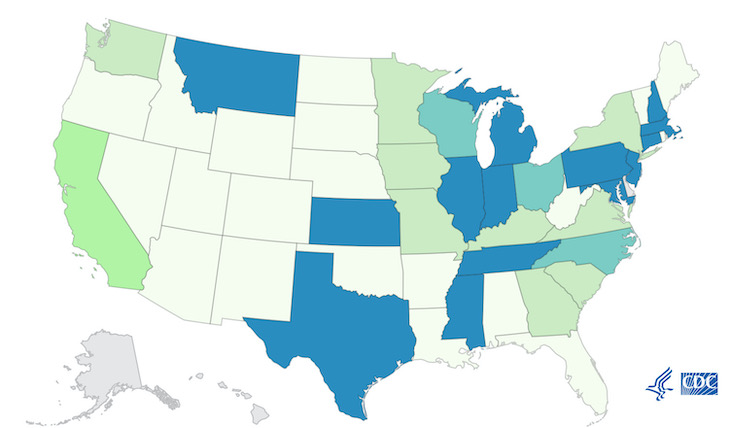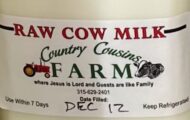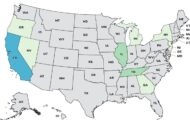The backyard poultry Salmonella outbreaks case count this year has skyrocketed to 672 sick in 47 states, which is an increase of 198 new patients since the last update on June 24, 2021. There are 157 people hospitalized, and two people have died. One in four patients is a child younger than the age of five.

There are five serotypes infecting people in these outbreaks: Salmonella Mbandaka, Salmonella Muenchen, Salmonella Enteritidis, Salmonella Hadar, and Salmonella Infantis. The case count by state is: Alabama (7), Arizona (9), Arkansas (5), California (24), Colorado (6), Connecticut (12), Florida (5), Georgia (28), Idaho (2), Illinois (17), Indiana (16) Iowa (26), Kansas (12), Kentucky (27), Louisiana (3), Maine (9), Maryland (13), Massachusetts (14), Michigan (12), Minnesota (30), Mississippi (15), Missouri (23), Montana (12), Nebraska (10), Nevada (1), New Hampshire (13), New Jersey (16), New Mexico (1), New York (27), North Carolina (33), North Dakota (4), Ohio (33), Oklahoma (5), Oregon (6), Pennsylvania (20), Rhode Island (3), South Caroinla (24), South Dakota (5), Tennessee (17), Texas (12), Utah (8), Vermont (9), Virginia (26), Washington (22), West Virginia (10), Wisconsin (37), and Wyoming (3).
Illness onset dates range from December 15, 2020 to June 25, 2021. The age range is from less than one year old to 97. Of 489 people who gave information about their condition to investigators, 157, or 32%, have been hospitalized. One person living in Indiana and one person living in Virginia have died.
The actual number of sick people in these outbreaks is much higher than the number reported. The multiplier for Salmonella outbreaks is 29. Epidemiologists use a multiplier because many people who are infected do not seek medical attention and are not included in these outbreak totals.
Epidemiologic and laboratory data show that contact with backyard poultry is making people sick. Of 423 people who were interviewed, 292, or 69%, said they had contact with these birds before they got sick.
And of samples taken from sick people, the birds, and the environment, 38% were predicted to be resistant to one or more of these antibiotics: amoxicillin-clavulanic acid (1.1%), ampicillin (1.3%), chloramphenicol (0.5%), cefoxitin (1.1%), ceftriaxone (1.1%), ciprofloxacin (0.2%), gentamicin (2.2%), kanamycin (0.4%), streptomycin (35.4%), sulfamethoxazole (2.9%), and tetracycline (33.9%).
If you keep backyard poultry, there are some rules you should follow. First, watch children carefully around these birds. Do not let them snuggle or kiss the birds. Make sure children sash their hands with soap and water after touching the poultry, their eggs, or anything in the area where they live. Keep the flock and supplies out of your home. That includes the shoes you wear and feed containers. And don’t let children under the age of five touch chicks, ducklings, or other backyard poultry.
If you have backyard poultry or have been in contact with them and have been ill with the symptoms of Salmonella, you may be part of this backyard poultry Salmonella outbreak. You should know when you should see a doctor.




